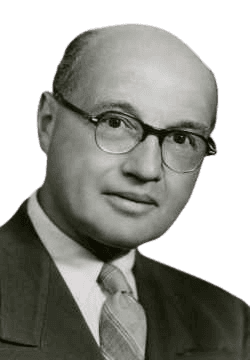Life and achievements
Early life
Izaak Maurits Kolthoff was born to a Jewish family on February 11, 1894, in Almelo, a city in the eastern part of the Netherlands. Kolthoff had a great passion for chemistry since childhood, and this was due to the encouragement of his teachers at school. He entered the University of Utrecht in 1911 to study pharmacy because the chemistry course had language demands, but he was very successful. In Utrecht, he attended the lectures of Nicholas Schoorl, who insisted on the theoretical approach to chemistry. Schoorl influenced Kolthoff's philosophy of science, and the latter's adage, "Theory guides, experiment decides," formed the basis of Kolthoff's research.
Kolthoff received his Ph.D. in 1918, and by this time, he had published several papers, most of which were in the recently discovered area of pH. His early work showed how he could relate theoretical concepts to real-life situations, a feature that would characterize his future career. Upon graduation, Kolthoff remained at Utrecht as a researcher and became a world expert in electrochemistry and analytical methods.
Legacy
Kolthoff's contribution can be the development of analytical chemistry from a more empirical science to a more scientific one. His contributions were not only in the academic field; he also contributed immensely in the practical world, especially during the Second World War, when he helped in the production of synthetic rubber for the U.S. government. His "cold process" for rubber synthesis was a breakthrough in rubber production and ensured that the U.S. was well-stocked during the war.
At the University of Minnesota, Kolthoff advised more than 50 doctoral students, most of whom became prominent chemists. His monumental Treatise on Analytical Chemistry is considered one of the most essential works in developing the field. Kolthoff continued to work as a researcher even after his retirement in 1962 and published papers until the last years of his life. His contribution to analytical chemistry is still felt today, and many current methods and techniques have their roots in his work.
Kolthoff's contribution is not limited to the field of chemistry only. He was very passionate about international collaboration in science and peace-making processes. He helped the scientists who were escaping from Nazi persecution during the Second World War and also spoke against nuclear bomb testing. His efforts towards promoting peace and academic freedom made him gain recognition from people beyond the scientific world. Still, at the same time, he became a subject of political investigations during the McCarthy period. However, the stature of Kolthoff as a scientist was not to be dented in any way.
Milestone moments
Jul 8, 1918
Doctor of Philosophy in Chemistry from Utrecht University
Izaak Kolthoff was born in 1918 and received his Ph.D. in chemistry from the University of Utrecht, which laid a solid foundation for his education.
His dissertation was on electrochemistry, specifically the theory of acid-base titrations, which formed the basis of his later work in analytical chemistry.
While at the University, Nicholas Schoorl tutored Kolthoff, who helped him understand the need to balance theory and practical application.
Kolthoff's early work on pH and titration made him well-known internationally before he left the Netherlands.
This academic achievement was the starting point of a highly successful career that would revolutionize analytical chemistry.
Jul 12, 1927
An Interview at the University of Minnesota
Kolthoff joined the University of Minnesota in 1927 as a one-year visitor and was responsible for building the University's analytical chemistry division.
Kolthoff first joined the University as a temporary faculty member. Still, he spent the rest of his career there. During his time at the University, he built the chemistry program to become one of the best in the country.
At Minnesota, Kolthoff continued translating and expanding his earlier works, making them available to an English-speaking audience.
He spent more than three and a half decades in Minnesota, and his contribution to the University's field of chemistry was one of the greatest.
Thus, Kolthoff contributed to forming a new generation of scientists and recognizing analytical chemistry as one of the major branches of science.
Feb 20, 1942
The Second World War Synthetic Rubber Production
During the Second World War, Kolthoff contributed to the U.S. synthetic rubber program and worked on the so-called "cold process" for rubber synthesis.
This was especially important during the Second World War when natural rubber was scarce and synthetic rubber was needed; Kolthoff's work was vital.
His research was mainly in emulsion polymerization, and he developed a more effective and energy-consuming method than conventional techniques.
Kolthoff's work was considered to be one of the greatest breakthroughs in rubber production, enabling the U.S. to produce enough rubber for wartime needs.
This project proved that Kolthoff could use theories to solve real-life problems, solidifying his place in science and business.
Apr 14, 1962
Conclusion of the author's career at the University of Minnesota
Kolthoff retired from the University of Minnesota in 1962 after 35 years of teaching and research but did not stop working.
By the time he retired, he had published more than 800 research papers, making him among his generation's most productive chemists.
In his post-retirement years, Kolthoff continued to work in the laboratory and authored 136 more papers, bringing his total output to almost 1000 papers.
His retirement signaled the end of an era at the University of Minnesota, but his legacy lived on through his research and his students.
This shows that even after retiring, Kolthoff remained active in science and contributed greatly to the development of chemistry.
